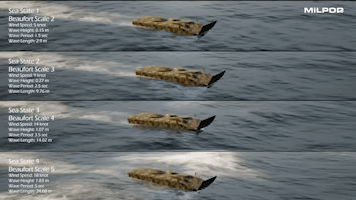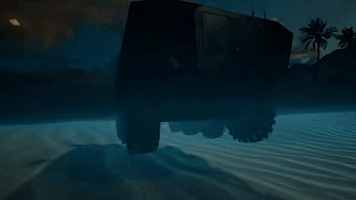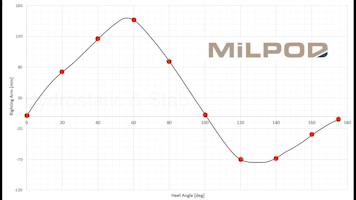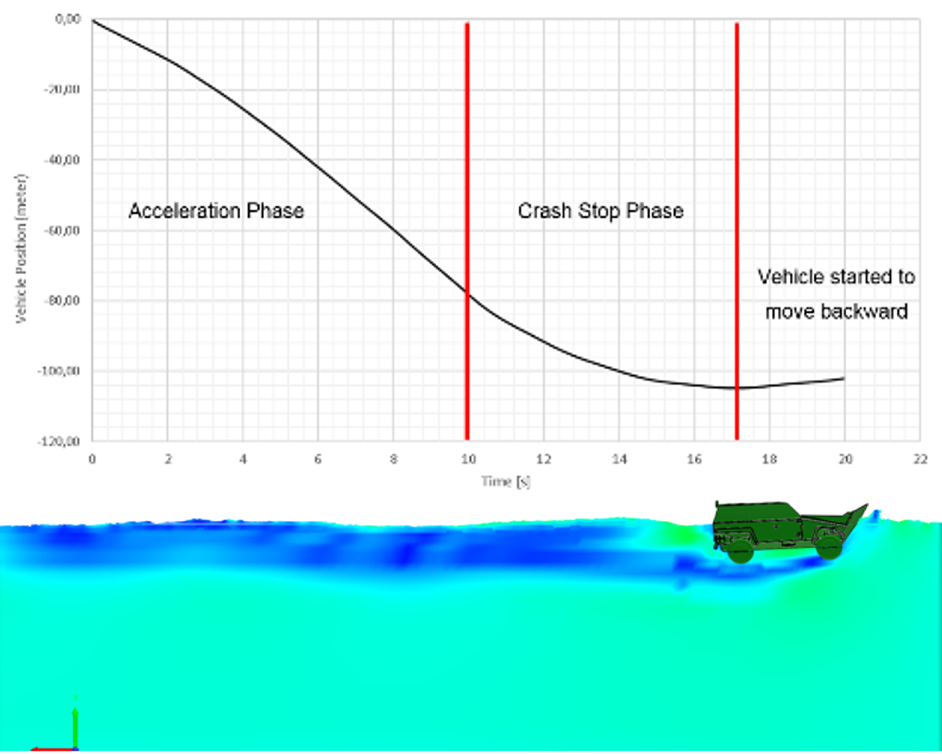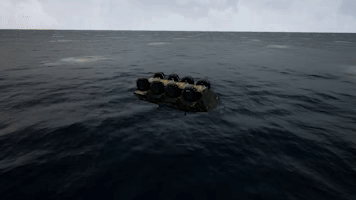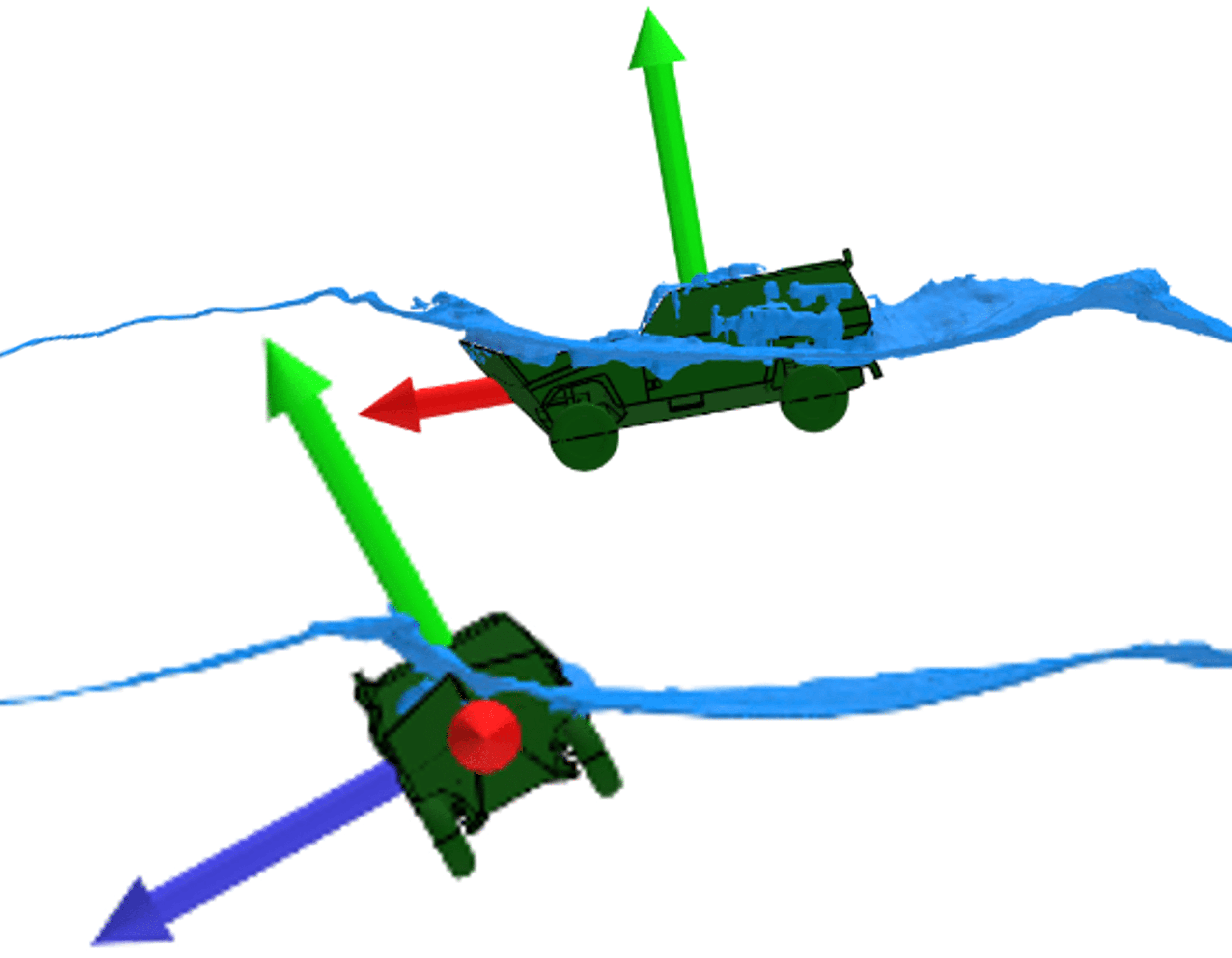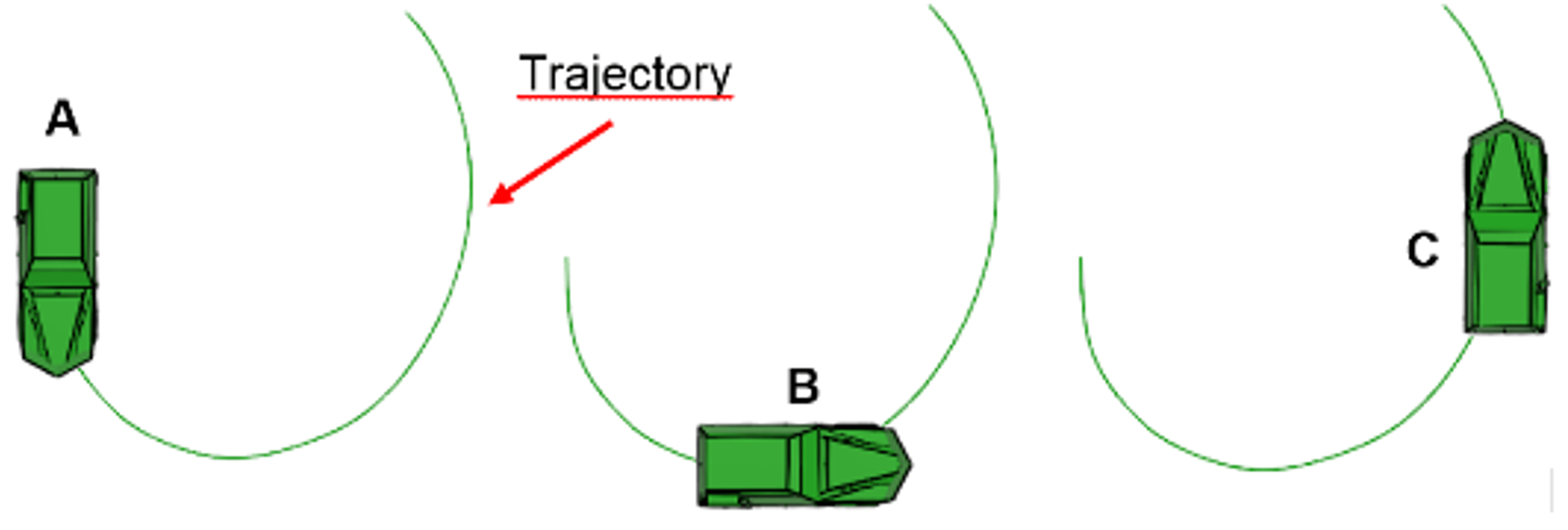CALCULATING PROPULSION POWER WITH UNMATCHED PRECISION
MILPOD offers unparalleled expertise in determining the precise propulsion power requirements for amphibious land vehicles. Our resistance and power analysis services are grounded in accuracy and tailored to meet the exacting demands of the defense industry.
Advanced CFD Methods for Resistance and Efficiency
We conduct in-depth analyses using:
- Customized Computational Fluid Dynamics (CFD): Employing the latest in CFD technology to predict resistance and efficiency with exceptional accuracy.
- Power and Resistance Curve Predictions: Assessing how different speeds impact the power needs and resistance levels of the vehicle.
Two-Phase Domain and Free Surface Capturing
Our approach encompasses:
- Complex Two-Phase Domain Setup: Analyzing both the vehicle and the surrounding fluid for comprehensive understanding of interaction dynamics.
- Free Surface Capturing Methods: Employing sophisticated techniques to track and simulate the interface between liquid and air around the vehicle.
Imposed and Solved Motion Calculations
MILPOD’s resistance and power analysis ensures:
- Accurate Motion Simulation: Considering up to six degrees of freedom to simulate how a vehicle will move and react in various conditions.
- Wave Generation for Realistic Scenarios: Creating simulations that reflect a range of sea states and weather conditions to ensure real-world applicability.
Closing Statement
For amphibious land vehicles that demand robust and efficient propulsion power, MILPOD’s resistance and power analysis is the definitive solution. Our commitment to precision, coupled with advanced CFD techniques, provides a solid foundation for vehicle design and operational excellence.
